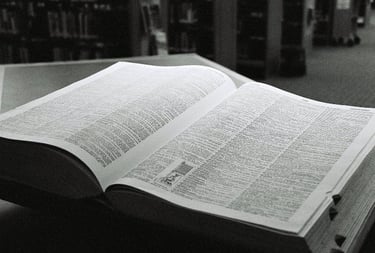Dealing With Painting Contractors: Defined Levels Of Surface Prep
Jeremy Holderness Last week, in this 'Dealing With Painting Contractors' series, we clarified exactly what a Properly Painted Surface is, as defined by the Painting & Decorating Contractors of America (PDCA).
Last week, in this 'Dealing With Painting Contractors' series, we clarified exactly what a Properly Painted Surface is, as defined by the Painting & Decorating Contractors of America (PDCA).
In this week's article we will discuss the PDCA's Defined Levels of Surface Preparation that you can incorporate into your next painting project's contract to help ensure that you get a great end result. These levels and practices described here will generally only apply to exterior painting projects.
Everyone knows that proper surface prep will determine not only how good your paint job will look, but it will also dictate how long it will last, as well as eliminate potential painting problems during its lifetime.
The problem is that there are different levels of surface preparation -- some of them legitimate, some of them not so much. I have no interest in discussing the later because that's not how we do business and I suggest that you don't allow corner-cutting practices on your project either.
So what are the legitimate defined levels of surface preparation needed to achieve a properly painted surface? There are actually 5 levels -- Levels 1-4 as well as a Restoration/Resurfacing Level. These levels are specific to preparing a surface that has been previously painted.
The amount of work and time required to achieve each level can drastically change the price of a painting contract. As the PDCA states, "the level of surface preparation selected should be done considering both appearance and cost."
Degree of Existing Surface Degradation
This standard identifies typical pre-existing conditions in coatings and substrates that are beyond the responsibility of the painting contractor, and describes how they can impact the adhesion, durability, appearance and cost of the finish painted surface. It also identifies common pre-existing conditions in surrounding work areas which impact final appearance and acceptability of the project.
The Master Painters Institute (MPI) Repaint Manual describes the condition of various paintable surfaces and substrates and rates them in order of degree of surface degradation (DSD) as follows:
DSD-0 Sound Surface
DSD-1 Slightly Deteriorated Surface DSD-2 Moderately Deteriorated Surface
DSD-3 Severely Deteriorated Surface
DSD-4 Substrate Damage
As further reference, the MPI Repaint Manual further describes various repaint surface preparation techniques that may be appropriate depending upon the condition of the surfaces to be painted. Please refer to it for more information.
Levels of Surface Preparation
These are copied directly from the PDCA Standards
Level 1 - Basic
"This surface preparation level requires basic cleanliness of surfaces to ensure the adhesion of new finishes to the surfaces to which they are applied with less concern for the adhesion of existing paint coats and quality of appearance of the finished surfaces. Preparation shall include the removal of surface dust, dirt, obvious loose paint and other surface contaminants by washing, light power washing or pressure washing (MPI RSP-5), hand cleaning (MPI RSPPainting 1) including the use of a duster brush or broom, and mildew treatment (MPI RSP-9). This level of preparation should ensure that subsequently applied coats of paint will adhere to existing paint coats. This level of surface preparation does not warrant that previously applied paint coats are well adhered to each other or are well adhered to the substrate. Under this level of preparation no alteration of the existing surface profile shall be attained. It is recommended that tests should be performed on exterior surfaces in accordance with ASTM D 4214 Standard Test Methods for Evaluating the Degree of Chalking of Exterior Paint Films. This level of surface preparation is normally recommended only on surfaces rated DSD-0 or DSD-1."
Level 2 - Standard
"This surface preparation level requires basic cleanliness of surface to ensure the adhesion of new finishes to the surfaces to which they are applied as well as the examination of existing coatings to assess their adhesion. With this level of surface preparation, good adhesion and longevity of finish is of primary concern and appearance is of secondary concern. This level of surface preparation includes that described in Level 1 plus other procedures necessary to create a sound surface for repainting including solvent cleaning (MPI-RSP-2), basic patching/filling, caulking, light sanding/abrading, and “feather edge” sanding. Under this level of surface preparation, it is recommended that adhesion by tape tests be performed in general accordance with ASTM Standard 3359 to assess the adhesion of previously applied paints. It is recommended that at least three tests be performed at randomly selected locations where it is apparent that different paint systems have been previously applied. When poor results are obtained (ratings of 0 or 1), at isolated locations, then more aggressive surface preparation methods including power tool cleaning (MPI RSP-4,) high pressure washing and hydroblasting (MPI-RSP-5,) chemical stripping (MPI RSP-6) and abrasive blasting (MPI RSP-7) may be recommended at these isolated locations. If it is determined that the poor adhesion of existing coatings is not isolated, but is widespread, then restoration/resurfacing is required. It should be recognized that many factors may affect the adhesion of the entire coating system that is applied including the properties of the coatings selected, their permeability, etc. Therefore, while the performance of adhesion tests provides some indication of the adhesion of existing coatings, they may not predict the overall adhesion of the total coating system after new coats have been applied. Under this level of preparation the surface profile is not altered unless due to the removal of unsound previously applied paint, and that only obvious existing defects causing abrupt surface profile differences exceeding 1/8 inch or 125 mils will be corrected. This level of surface preparation is normally recommended only on surfaces rated DSD-0, DSD-1 or DSD-2."
Level 3 - Superior
"This surface preparation level incorporates the requirements of Levels 1 and 2 with added emphasis on the quality of appearance of finish painted surfaces. This level of surface preparation includes filling, patching, taping cracks in drywall and properly dealing with “nail pops,” approximate matches to existing textures, and thorough sanding to minimize existing runs, sags, brush/roller marks, and the surface profile of cracked and peeling areas, and other existing surface defects. Under this level of preparation the general surface profile is retained but defects causing abrupt surface profile differences exceeding 1/16 inch or 62.5 mils will be corrected. This level of surface preparation is normally recommended only on surfaces rated DSD-0, DSD-1 or DSD-2."
Level 4 - Supreme
"This surface preparation level incorporates the requirements of Levels 1, 2 and 3 with even more emphasis on the quality of appearance of finish painted surfaces. Under this level of surface preparation, all necessary preparation techniques will be employed to improve the quality of appearance except restoration/resurfacing. Thorough filling and sanding will be accomplished to eliminate defects causing abrupt surface profile differences exceeding 1/32 inch or 31 mils. This level of surface preparation is normally recommended only on surfaces rated DSD-0, DSD-1 or DSD-2."
Restoration/Resurfacing
"This degree of surface preparation is required when existing conditions indicate that the surfaces are severely deteriorated (DSD-3) or there is substrate damage (DSD-4). Existing coatings may be completely, or nearly completely removed (for example stripping to repaint rather that stripping to stain). Abrasion, chemical removers or applied heat may be employed in order to remove a failed coating and/or to expose a failing substrate. Substrates may have to be completely replaced, repaired or resurfaced."
Default Level
When you're dealing with a contractor that follows these standards the PDCA states: "Specifications not specifically stating the level of preparation to be attained will be assumed to imply Level 2."
In Layman's Terms
Now that I've bored you to death with the PDCA's technical terms that you can incorporate in your next painting contract, I'll also include the link to a past blog article that gives you a good general guide to doing surface prep yourself...in plain English.
How Important Is Exterior Painting Surface Prep?
Next week in the final article in this series we'll discuss the PDCA's Standard on Spot Repairing Existing Finishes.
If you need assistance with your painting project, please give us a call at (813) 570-8800 or visit our Contact Us page to schedule a free consultation and quote, or simply click on the button below to have us call you.
Photo by: greeblie / CC BY 2.0








